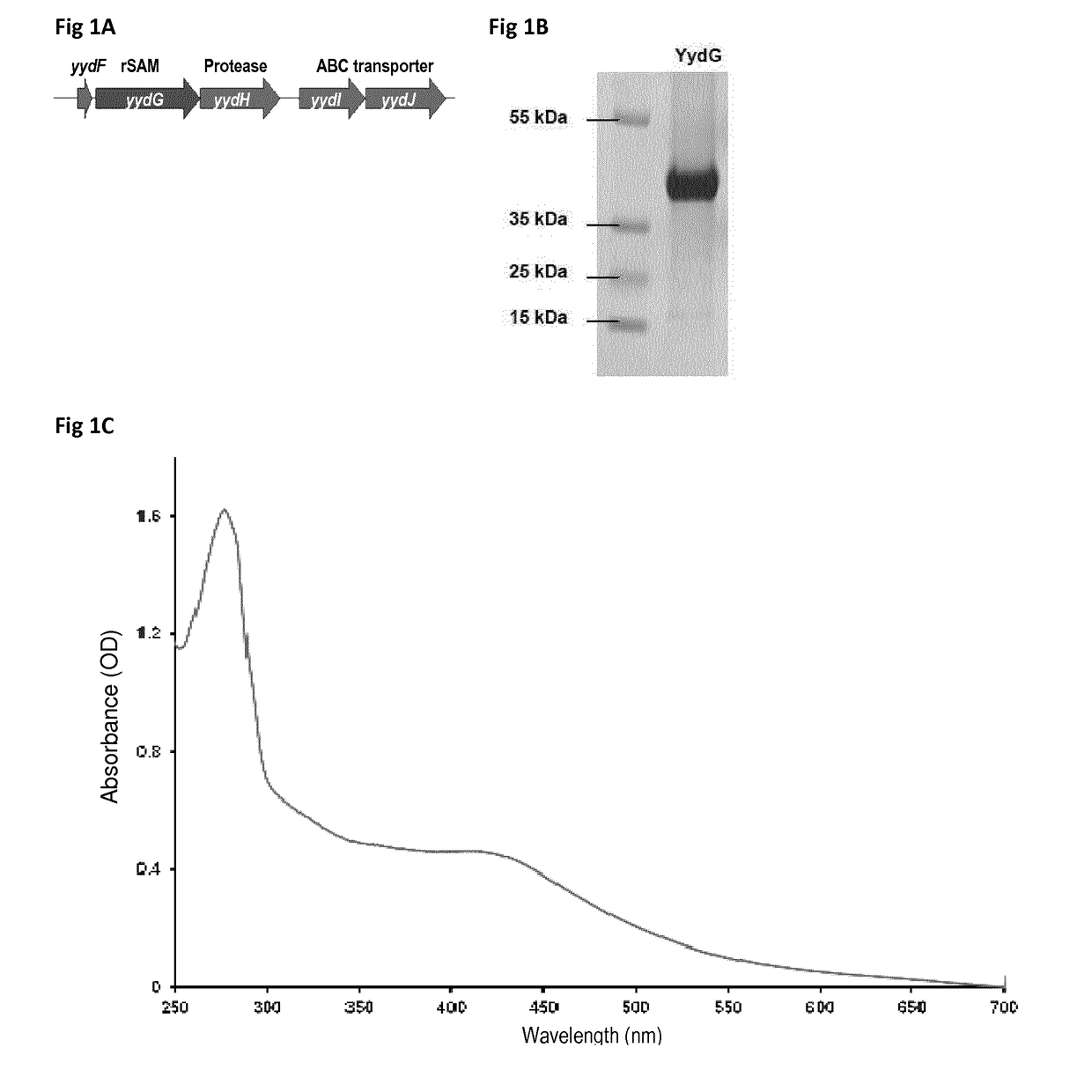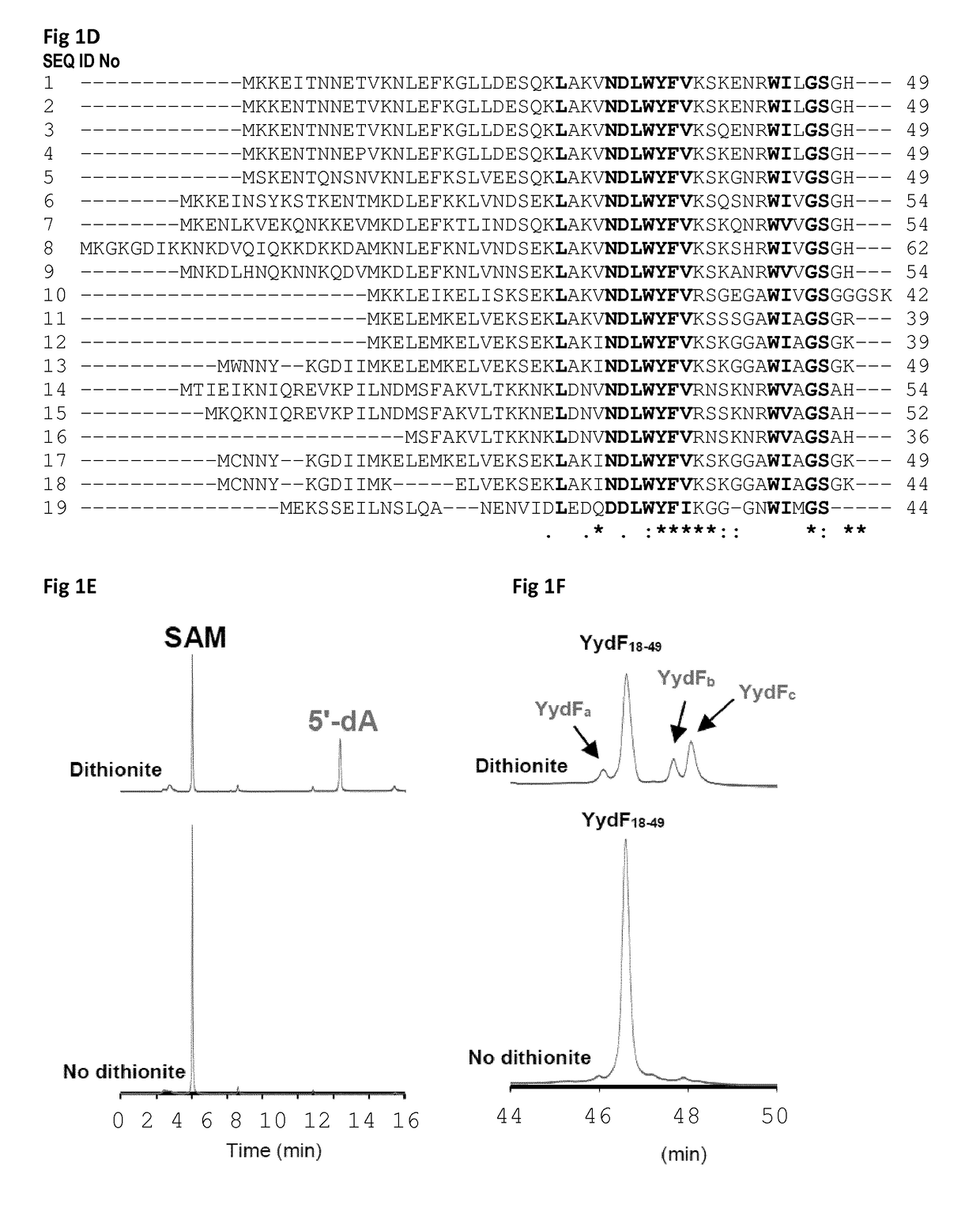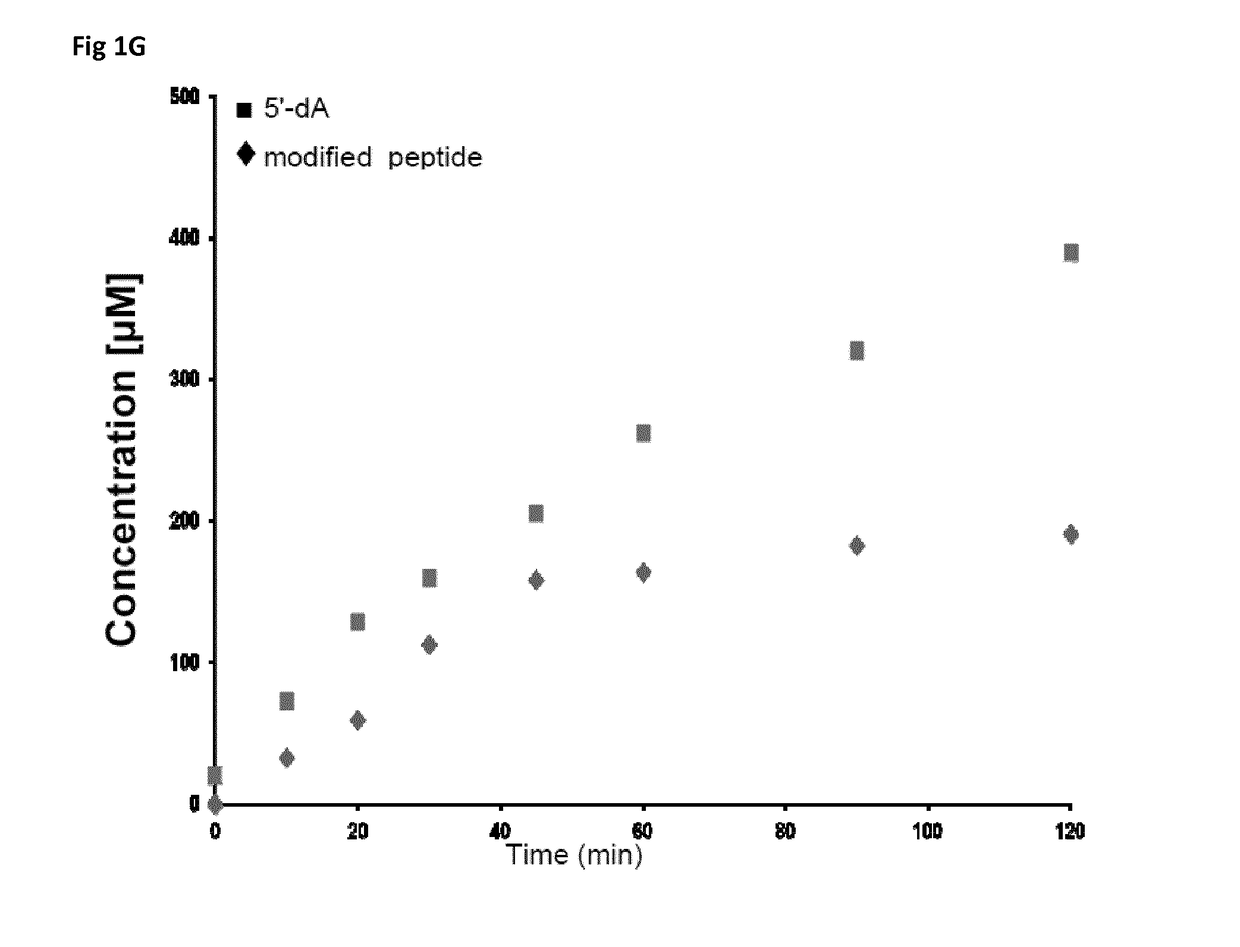New peptides having antimicrobial activity and new enzyme capable of converting l-configured residue in d-configured amino acid in a peptide
a technology of antimicrobial activity and enzyme, applied in the field of medicine, can solve the problems of major limitation in the use and therapeutic development of peptides, the inability to use strategies in the context of synthesized peptides, and the threat to global public health
- Summary
- Abstract
- Description
- Claims
- Application Information
AI Technical Summary
Benefits of technology
Problems solved by technology
Method used
Image
Examples
example 1
[0196]Here the inventors showed that the common laboratory strain Bacillus subtilis is able to produce a novel type of bioactive peptides containing D-amino acids despite being of ribosomal origin. This peptide is post-translationally modified by a novel enzyme belonging to the superfamily of radical SAM enzymes. They demonstrated that this novel enzyme uses an unprecedented radical-based mechanism to convert L-Isoleucine and L-valine residues into D-allo-lsoleucine and D-valine. They established that this enzyme generates a 5′-deoxyadenosyl radical to catalyze Cα H-atom abstraction leading to the formation of a carbon-centered radical. Mutagenesis experiments support that this enzyme possesses two essential [4Fe-4S] centers and allow identifying a critical H-atom donor, required for the termination of the catalytic cycle. Finally, in a unique manner, they discovered that the presence of D-amino acids is required for the activity of this bioactive peptide which likely induces LiaRS,...
example 2
[0213]A gene, yydF, was proposed in the literature to encode a peptide produced by Bacillus subtilis (SEQ ID No 1). However no proof of its actual synthesis or of any post-translational modification has been reported.
[0214]After growth of B. subtilis in a synthetic medium (Buffer solution 5× (Na2HPO4: 17 g ; KH2PO4: 7.5 g, NaCl: 1.25 g; NH4Cl: 2.5 g in 500 mL); Trace element solution: MnCl2: 20 mg; ZnCl2: 34 mg; CuCl2: 8.6mg; CoCl2: 12mg; Na2MoO4 : 12 mg; in 200 mL), the inventors successfully purified a peptide, originating from YydF and encompassing residues 33 to 49 (FIG. 7), as established by mass spectrometry analysis (Table 1). The sequence of the isolated peptide was determined to be (SEQ ID No 61):
Trp Tyr Phe Val Lys Ser Lys Glu Asn Arg Trp Ile1 5 10Leu Gly Ser Gly His 15SEQ ID No 61: Sequence of the peptide YydF33_49
[0215]In addition, the inventors determined that the peptide YydF33-49, produced by B. subtilis contained 2 epimerized re...
PUM
| Property | Measurement | Unit |
|---|---|---|
| OD | aaaaa | aaaaa |
| mass analyses | aaaaa | aaaaa |
| flow rate | aaaaa | aaaaa |
Abstract
Description
Claims
Application Information
 Login to View More
Login to View More - R&D
- Intellectual Property
- Life Sciences
- Materials
- Tech Scout
- Unparalleled Data Quality
- Higher Quality Content
- 60% Fewer Hallucinations
Browse by: Latest US Patents, China's latest patents, Technical Efficacy Thesaurus, Application Domain, Technology Topic, Popular Technical Reports.
© 2025 PatSnap. All rights reserved.Legal|Privacy policy|Modern Slavery Act Transparency Statement|Sitemap|About US| Contact US: help@patsnap.com



